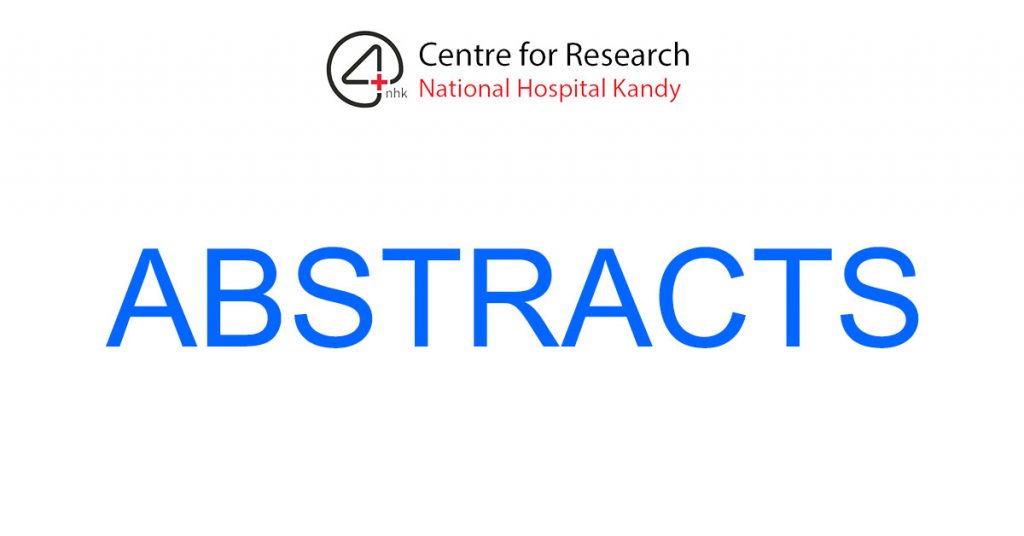Duminda B. Basnayake1*, Naduni H. Erandika1, Hashan K. Amarathunga2, Ayesha A. Nayanamali1, Jayamini Pathiraja2, Rangi Kandane-Rathnayake3, Abdul W. M. Wazil1, Nishantha Nanayakkara1, Kushan T. Thennakoon1, Inoka M. Chathurani1, Ruwina A. Deepani1, Buddhika A. Wijayawickrama1
1Department of Nephrology and Renal Transplant, 2Department of Nutritional Medicine, National Hospital Kandy, Sri Lanka,
3School of Clinical Sciences at Monash Health, Monash University, Melbourne, Australia
ABSTRACT
Background: The assessment of body fat distribution is an important evaluation in patients with lupus nephritis (LN), which does not practice routinely. The objectives of this study were to determine the body composition by using bioelectrical impedance analysis and to identify the effects of age, body mass index, disease activity, and corticosteroid therapy on body composition.
Methods: This was a single-centered, cross-sectional, and observational study conducted at the nephrology unit, National Hospital Kandy, Sri Lanka. Seventy-nine patients with biopsy-proven LN have participated in the study.
Results: There were 79 lupus nephritis patients enrolled in this study. The duration of LN ranged from 8 months to 32 years. The main non-renal clinical manifestations included skin lesions (59%), arthritis (54%), and oral ulcers (48%). The disease activity was low with a mean SLEDAI score of 1.01 (SD=2.3). The body fat (BF) percentage (p=0.002) and subcutaneous fat (SF) percentage (p<0.001) were significantly low in males compared to females. And, BF percentage was significantly low among patients with SLEDAI-2K 6 (p=0.03). Moreover, there were positive correlations found between SLE disease activity with the BMI (p=0.004), body fat percentage (p=0.001), and visceral fat percentage (p=0.001).
Conclusions: Females are more prone to have a high mean value of body composition parameters than males in this study. There is a negative influence of the body composition parameters reported against the disease activity among LN patients in Sri Lanka.
![]()

